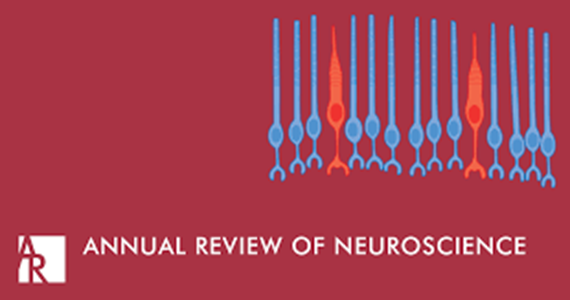针对不同脑细胞的腺相关病毒工具包。
IF 13.2
1区 医学
Q1 NEUROSCIENCES
引用次数: 34
摘要
重组腺相关病毒是神经科学研究中常用的基因传递载体。它们有两个可工程化的特征:衣壳(蛋白质外壳)和货物(封装的基因组)。这些特征可以被修饰以分别增强细胞类型或组织向性和控制转基因表达。已经鉴定出几种具有独特热带性的工程AAV衣壳,包括具有增强的中枢神经系统转导、细胞类型特异性和神经元逆行转运的变体。将这些AAV与现代基因调控元件和最先进的报告子、传感器和效应子货物配对,可以实现用于脑细胞和电路解剖和功能分析的高度特异性转基因表达。在这里,我们讨论了最近的进展,这些进展为分子定义的脑细胞类型的基因获取提供了一个全面的(衣壳和货物)AAV工具包。《神经科学年度评论》第45卷预计最终在线出版日期为2022年7月。请参阅http://www.annualreviews.org/page/journal/pubdates用于修订估算。本文章由计算机程序翻译,如有差异,请以英文原文为准。
Adeno-Associated Virus Toolkit to Target Diverse Brain Cells.
Recombinant adeno-associated viruses (AAVs) are commonly used gene delivery vehicles for neuroscience research. They have two engineerable features: the capsid (outer protein shell) and cargo (encapsulated genome). These features can be modified to enhance cell type or tissue tropism and control transgene expression, respectively. Several engineered AAV capsids with unique tropisms have been identified, including variants with enhanced central nervous system transduction, cell type specificity, and retrograde transport in neurons. Pairing these AAVs with modern gene regulatory elements and state-of-the-art reporter, sensor, and effector cargo enables highly specific transgene expression for anatomical and functional analyses of brain cells and circuits. Here, we discuss recent advances that provide a comprehensive (capsid and cargo) AAV toolkit for genetic access to molecularly defined brain cell types. Expected final online publication date for the Annual Review of Neuroscience, Volume 45 is July 2022. Please see http://www.annualreviews.org/page/journal/pubdates for revised estimates.
求助全文
通过发布文献求助,成功后即可免费获取论文全文。
去求助
来源期刊

Annual review of neuroscience
医学-神经科学
CiteScore
25.30
自引率
0.70%
发文量
29
期刊介绍:
The Annual Review of Neuroscience is a well-established and comprehensive journal in the field of neuroscience, with a rich history and a commitment to open access and scholarly communication. The journal has been in publication since 1978, providing a long-standing source of authoritative reviews in neuroscience.
The Annual Review of Neuroscience encompasses a wide range of topics within neuroscience, including but not limited to: Molecular and cellular neuroscience, Neurogenetics, Developmental neuroscience, Neural plasticity and repair, Systems neuroscience, Cognitive neuroscience, Behavioral neuroscience, Neurobiology of disease. Occasionally, the journal also features reviews on the history of neuroscience and ethical considerations within the field.
 求助内容:
求助内容: 应助结果提醒方式:
应助结果提醒方式:


